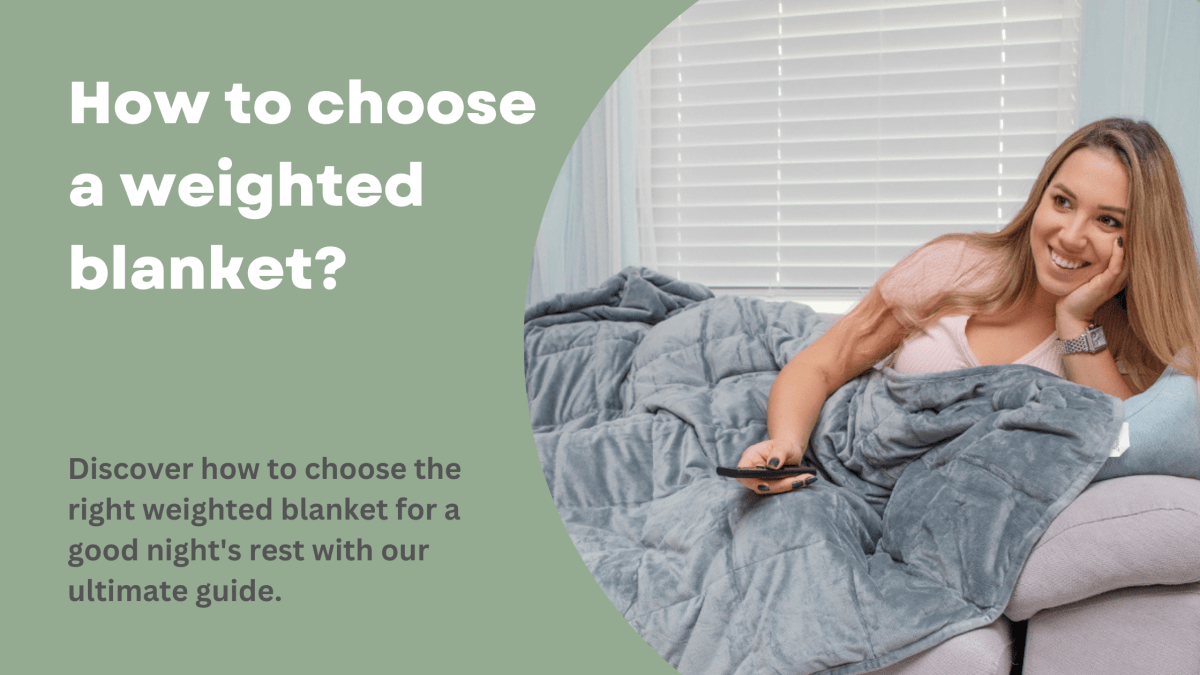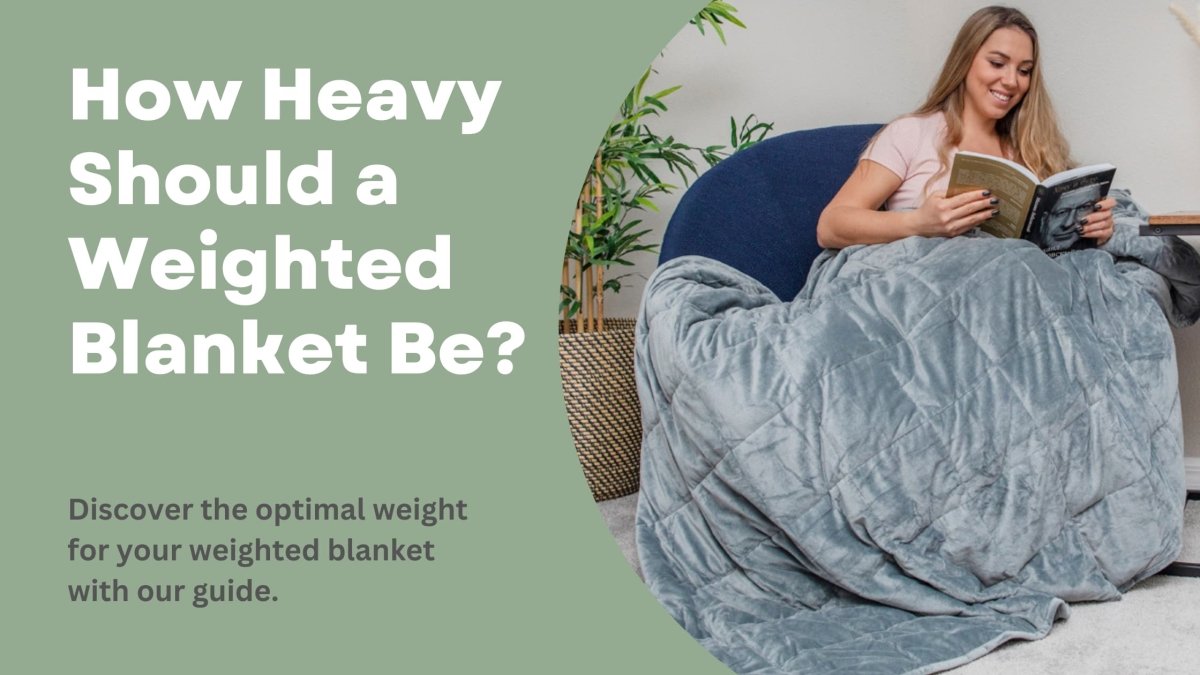How Weighted Blankets Improve Sleep and Reduce Anxiety
How Weighted Blankets Improve Sleep and Reduce Anxiety
Weighted blankets have gained significant popularity in recent years as an effective natural sleep aid and anxiety relief tool. Filled with materials such as glass beads or plastic pellets, these blankets provide gentle pressure when draped over the body, promoting relaxation and comfort. This article delves into the research and science behind weighted blankets, detailing how they improve sleep quality and reduce anxiety through deep touch pressure stimulation and other physiological mechanisms.
Deep Touch Pressure Stimulation: The Foundation of Weighted Blankets
1. The Concept of Deep Touch Pressure Stimulation
The therapeutic benefits of weighted blankets primarily stem from deep touch pressure stimulation (DTPS), a form of tactile sensory input involving the application of gentle, even pressure on the body. DTPS has been used in various forms of therapy for individuals with sensory processing disorders, autism, and attention deficit hyperactivity disorder (ADHD).
2. Activating the Proprioceptive System
DTPS works by engaging the body's proprioceptive system, responsible for regulating the sense of body position, movement, and spatial awareness. When deep touch pressure is applied, this system is stimulated, leading to a range of physiological responses.
3. Neurotransmitter Release
One of the key responses to DTPS is the release of neurotransmitters such as serotonin and dopamine, which contribute to feelings of relaxation and well-being. These neurotransmitters also help regulate cortisol, a stress hormone, in the body, further promoting relaxation.
Improving Sleep Quality
1. Melatonin Production
Weighted blankets have been shown to positively impact sleep quality by increasing the production of melatonin, a hormone responsible for regulating the sleep-wake cycle. The gentle pressure provided by a weighted blanket can stimulate serotonin release, which is a precursor to melatonin. This leads to an overall increase in melatonin levels, helping individuals fall asleep more easily and experience deeper, more restful sleep.
2. Sleep Study Findings
A 2015 study published in the Journal of Sleep Medicine & Disorders found that participants who used a weighted blanket experienced reduced sleep onset latency, increased sleep duration, and decreased nighttime awakenings. These findings suggest that weighted blankets can be an effective tool in improving overall sleep quality.
3. Impact on Insomnia
Research has also shown that weighted blankets can be particularly beneficial for individuals with insomnia. A study published in the Journal of Clinical Sleep Medicine in 2020 found that participants who used a weighted blanket experienced significant improvements in their insomnia severity, sleep maintenance, and daytime symptoms.
Reducing Anxiety
1. Calming and Grounding Effects
Weighted blankets have been found to help reduce anxiety by providing a calming, grounding effect through DTPS. The release of serotonin and dopamine in response to deep touch pressure can help alleviate feelings of stress and anxiety, promoting relaxation.
2. Anxiety Study Findings
A 2018 study published in the Journal of Occupational Therapy in Mental Health investigated the effects of using a weighted blanket on anxiety levels in adults. Participants who used a weighted blanket during a stress-inducing task reported significantly lower anxiety levels compared to those who did not use a weighted blanket. This suggests that weighted blankets can be an effective tool in managing anxiety and promoting relaxation.
3. Benefits for PTSD and Panic Disorder
Research has also indicated that weighted blankets can be beneficial for individuals with post-traumatic stress disorder (PTSD) and panic disorder. The grounding effect of DTPS helps to alleviate symptoms of hyperarousal and anxiety, enabling a greater sense of safety and security.
Conclusion
The science behind weighted blankets reveals their potential to improve sleep quality and reduce anxiety through a variety of physiological mechanisms, including the activation of the body's proprioceptive system and the release of neurotransmitters that promote relaxation. By incorporating a weighted blanket into your sleep routine, you may be able to experience deeper, more restful sleep and reduced feelings of anxiety. However, it is important to consult with a healthcare professional before using a weighted blanket, particularly for individuals with specific health conditions or concerns.
Additional Considerations and Tips for Using Weighted Blankets
1. Selecting the Appropriate Weight
When choosing a weighted blanket, it's crucial to select the right weight based on your body weight and personal preferences. As a general rule, the blanket should weigh approximately 10% of your body weight, plus or minus a pound or two. However, it's always best to consult with a healthcare professional for personalized guidance.
2. Material and Construction
Weighted blankets come in various materials, including cotton, bamboo, and polyester. Consider factors such as breathability, warmth, and ease of maintenance when choosing the right fabric. Additionally, look for blankets with even weight distribution, such as those with a grid-like stitching pattern, to ensure consistent pressure throughout the blanket.
3. Safety Precautions
While weighted blankets can be beneficial for most individuals, they may not be suitable for everyone. They are not recommended for children under two years of age, individuals with respiratory issues, or those with certain medical conditions. Consult a healthcare professional if you have any concerns about using a weighted blanket.
4. Gradually Introducing the Weighted Blanket
When first using a weighted blanket, it's helpful to introduce it gradually into your sleep routine. Begin by draping it over your legs or lower body, and slowly increase the coverage and duration of use as you become more comfortable with the added weight.
5. Combining Weighted Blankets with Other Sleep Hygiene Practices
For optimal results, use your weighted blanket in conjunction with good sleep hygiene practices, such as maintaining a consistent sleep schedule, creating a relaxing bedtime routine, and ensuring a comfortable sleep environment. By addressing multiple factors that contribute to sleep quality and anxiety reduction, you'll be better positioned to enjoy the full benefits of your weighted blanket.
In conclusion, weighted blankets offer a range of potential benefits, including improved sleep quality and reduced anxiety, by leveraging deep touch pressure stimulation and other physiological mechanisms. With the right selection, gradual introduction, and adherence to good sleep hygiene practices, a weighted blanket can become a valuable tool for enhancing relaxation, well-being, and overall quality of life.




